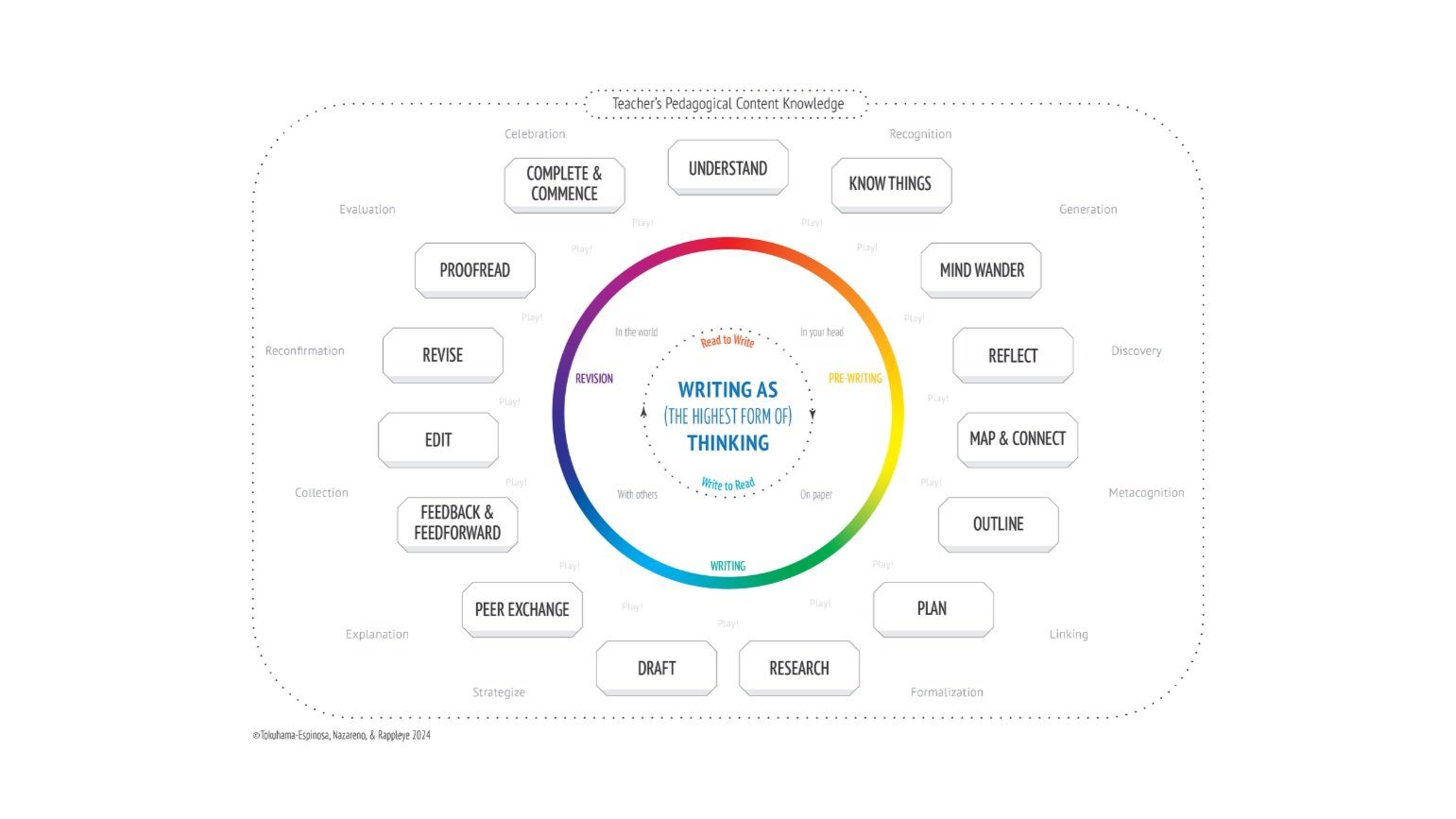Why Use ThinkWrite?
Writing is the highest form of thinking. We need better thinkers in society. Better thinkers, better writers. Better writers, better thinkers. —Tracey Tokuhama-Espinosa
ThinkWrite shifts the gaze of assessment to the underlying, invisible thinking, which is the key to coaching good writing. —Chris Rappleye
Everyone has the potential to be a great writer. ThinkWrite helps people feel they can write and breaks down the barriers to believing they can’t. —Jovi Nazareno

What is the ThinkWrite Model?
ThinkWrite is a new way to teach the writing process based on Mind, Brain, and Education (MBE) science. Using the accumulative knowledge from Mind (psychology), Brain (neuroscience) and Education (pedagogical practices), we have structured a methodology to help writers of all ages.
Most of writing is done through thinking, although most of these thinking stages are not explicitly taught to learners nor is time given to them in classroom settings. ThinkWrite has created a way to make many of these invisible processes visible.
Writing is often described in linear terms, but thinking is not linear and as a consequence neither is writing. In ThinkWrite, every writer has a different path and pace through the writing process.

Who can use ThinkWrite?
ThinkWrite can be used across the ages (3+). ThinkWrite can be used by a single person or by entire classrooms, schools, districts, or even states.
ThinkWrite is designed to allow learners to begin at any stage of writing and to develop their own process as they explore different writing genres. There are more than 100 activities that users can choose from, averaging seven to eight options for every stage of writing. As learners complete each writing assignment and receive feedback, they are encouraged to self-assess ways to improve the next time by modifying the process. The methodology ensures time to learn from mistakes and to grow with each assignment.
How does it work?
To frame the ThinkWrite model, we have divided the concepts into familiar terminology in three parts: pre-writing, writing, and revision, even though we know writing does not always follow this linear organization. Read more to learn how ThinkWrite challenges traditional, familiar, and time-bound approaches to writing.
